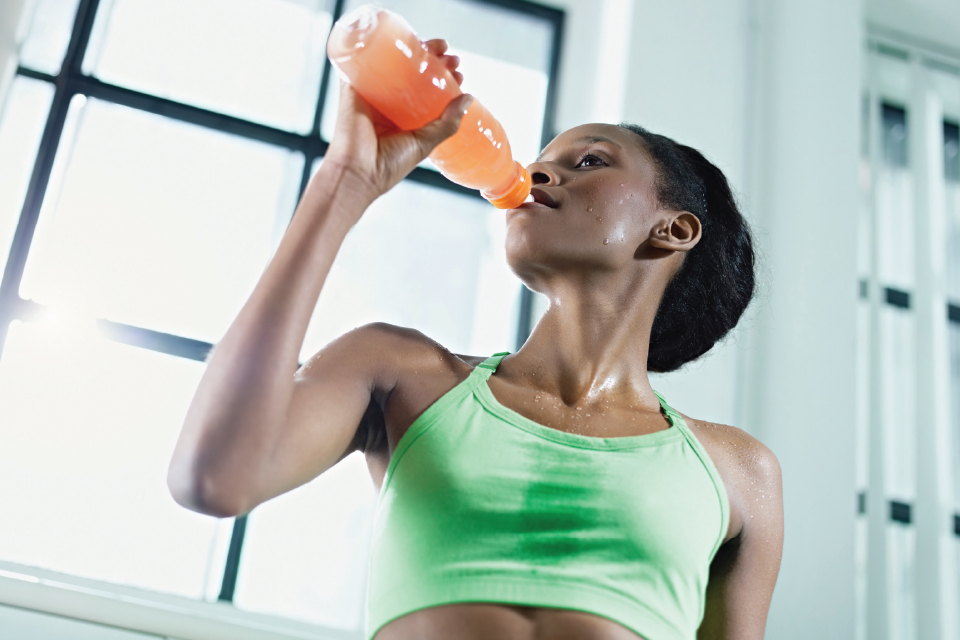Understanding Electrolytes and Hydration

Proper and consistent hydration habits contribute to top performance, particularly during rigorous physical activity. Most active individuals recognize the importance of adequate hydration and replenishing fluid losses when exercising, yet they often forget the need to replace electrolytes that are lost through sweating.
Hydration is essential to prevent muscle cramping and other more serious conditions, such as heat exhaustion and heat stroke. This is especially crucial moving into the hot summer months of outdoor activity.
How to monitor hydration?
The best (and easiest) way to monitor hydration status is by checking urine color and frequency. Urine color should be clear to pale yellow, at a rate of urinating every two or three hours during the day. If urination is more frequent and clear, but low volume, consider drinking fluids with electrolytes as opposed to plain water.
To track hydration and fluid losses during physical activity, sweat rate can be calculated by measuring weight loss before and after exercise. If weight loss after exercise is two pounds or more, dehydration is likely.
Be aware of conditions that increase fluid loss through sweat. These conditions include air temperature, intensity, body size, gender, duration and level of fitness. It’s also important to remember that swimmers sweat. As with any physical activity, body temperatures rise and the body sweats to keep from overheating. Many swimmers may suffer from dehydration because the water keeps them feeling cooler and less thirsty.
A standard rule of thumb for rehydration is 16–24 ounces of fluid per pound of body weight lost during exercise lasting greater than one hour. While it is important to drink water, it is also important to take electrolyte replenishment into consideration when choosing rehydration fluids.
What are electrolytes?
Electrolytes are minerals that break down into small, electrically charged ions when dissolved in water. They regulate body fluids, help maintain healthy blood pH balances and create electrical impulses essential to all aspects of physical activity. Muscles cannot contract without electrolytes. Therefore, it is critical for athletes to ensure they are maintaining adequate electrolytes before, during and after exercise.
Tips for determining how and when to hydrate with electrolytes.
First, determine if you are a salty sweater by tasting your sweat. If you can taste the salt, you’ll need to rehydrate during and after exercise with electrolyte-fortified drinks. These can include sports drinks (i.e. Gatorade or Powerade), electrolyte tablets (i.e. SaltStick Caps, Nuun) or coconut water.
Once you’ve determined your needs, follow these easy guidelines for hydrating around exercise:
-3–4 hours before exercise/competition: drink 16 ounces of water
-1–2 hours before: drink 8 ounces of water or sports drink
-15–30 minutes before: drink 6 ounces of water or sports drink
-During training or competition: drink 8 ounces of water or sports drink every 20 minutes (sports drink is recommended for extra energy if activity lasts longer than one hour)
-After: minimum 16 ounces of water or sports drink (16–24 ounces per pound of weight lost during activity)
Also, make sure to consume a balanced diet with fruits, vegetables, lean protein, healthy fats and whole grains — the best way to ensure electrolyte balance.
And know, just because you work in an air-conditioned building all day doesn’t mean you can forget about hydration during the day. If you wait until you’re thirsty to drink water, chances are you are already mildly dehydrated. Keep a bottle of water with you at all times during the day to remind you to drink up.






